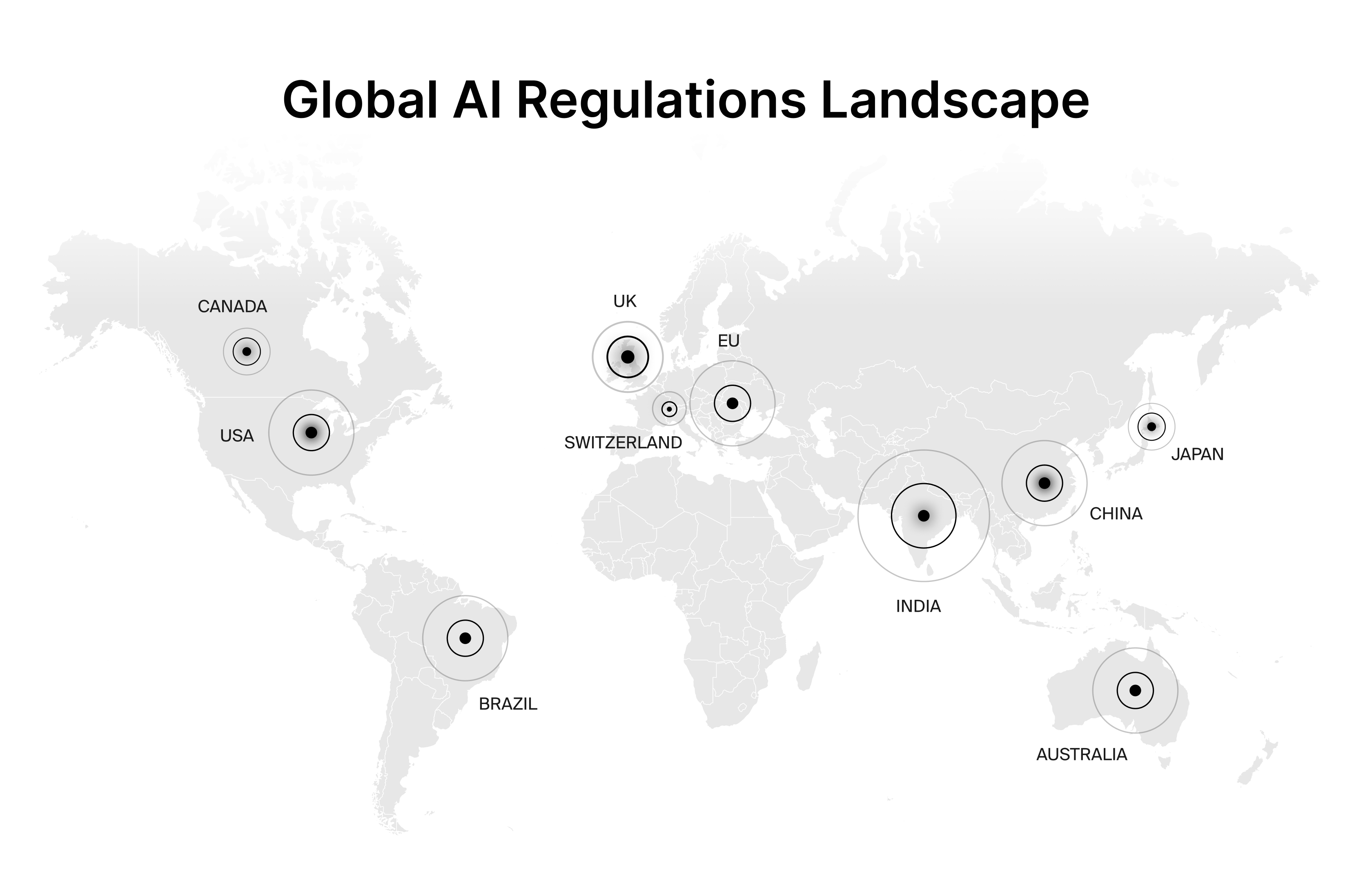Shifting Global AI Landscape: Middle East's Diminished Role

Table of Contents
Lack of Investment and Funding in Middle Eastern AI
The Middle East's underperformance in the AI arena is significantly linked to a shortfall in investment and funding. This deficit manifests in both the public and private sectors, creating a significant hurdle for growth.
Insufficient Government Funding
Governmental commitment to AI research, development, and infrastructure in the Middle East lags considerably behind global leaders like the US and China. This lack of strategic investment hampers progress across the board.
- Limited government grants for AI startups: The scarcity of funding opportunities for nascent AI companies stifles innovation and prevents promising projects from reaching their full potential. Many talented entrepreneurs lack the crucial financial support needed to launch and scale their ventures.
- Lack of national AI strategies with clear funding allocations: The absence of comprehensive national AI strategies with dedicated budgets hinders coordinated efforts and prevents effective resource allocation. Without a clear roadmap and dedicated funding streams, progress is fragmented and inefficient.
- Insufficient investment in AI education and training programs: A lack of investment in education creates a vicious cycle. Without a skilled workforce, attracting investment becomes even harder. This needs to be addressed through robust funding of AI-focused educational programs at all levels.
Private Sector Hesitation
The private sector's contribution to Middle East AI remains comparatively low. Risk aversion and a perceived lack of immediate return on investment (ROI) are key deterrents.
- Limited venture capital funding for AI projects: Venture capitalists and angel investors show a preference for established, less risky investments, often overlooking the high-potential, yet inherently risky, nature of early-stage AI ventures.
- Preference for established, less risky investments: Businesses often prioritize established technologies and well-trodden paths, overlooking the disruptive potential and long-term benefits of AI adoption.
- Lack of awareness among businesses about the potential benefits of AI: Many businesses in the region lack a deep understanding of how AI can enhance efficiency, productivity, and profitability, leading to hesitancy in adopting and investing in AI technologies.
Talent Acquisition and Retention Challenges in the Middle East AI Sector
The scarcity of skilled AI professionals is another major impediment to the Middle East's AI ambitions. This challenge is exacerbated by both brain drain and educational gaps.
Brain Drain
Highly qualified AI professionals from the Middle East often seek better opportunities abroad, draining the region of its most valuable talent.
- Lack of competitive salaries and benefits: The Middle East often fails to offer competitive compensation packages compared to established AI hubs globally, driving skilled professionals to seek opportunities elsewhere.
- Limited career advancement opportunities: A lack of growth opportunities and hierarchical structures within the Middle East AI sector makes it less attractive to ambitious professionals seeking long-term career development.
- Preference for working in more established AI ecosystems: Established AI ecosystems in countries like the US, Canada and the UK provide more networking opportunities, better infrastructure, and access to collaborative research projects which attract talent.
Educational Gaps
The existing educational infrastructure in the region often falls short of producing the skilled AI workforce needed to fuel AI development Middle East.
- Insufficient focus on AI-related subjects in university curricula: Many universities lack comprehensive AI programs, offering limited opportunities for students to specialize in this crucial field.
- Lack of specialized AI training programs: The region lacks sufficient specialized training programs to upskill and reskill the existing workforce and prepare them for AI-related jobs.
- Limited collaboration between academia and industry: The lack of effective collaborations between universities and businesses hinders the development of practical skills and the transfer of knowledge from research to industry.
Regulatory and Infrastructure Limitations Hindering Middle East AI Growth
Bureaucratic hurdles, inadequate regulations, and insufficient digital infrastructure further complicate the challenges facing Middle East AI development.
Lack of Supportive Regulations
Complex and often unclear regulatory frameworks stifle innovation and discourage investment.
- Complex licensing procedures for AI businesses: Lengthy and convoluted processes for licensing AI businesses create unnecessary barriers to entry, hindering growth and competitiveness.
- Data privacy concerns hindering data-driven AI development: Concerns about data privacy and security can limit the availability of crucial data sets for training AI models and impede progress in data-driven AI applications.
- Lack of standardized AI ethics guidelines: The absence of clear ethical guidelines for AI development and deployment can create uncertainty and hinder innovation.
Inadequate Digital Infrastructure
Limited access to high-speed internet and robust digital infrastructure hampers AI development and deployment.
- Uneven internet access across the region: Unequal internet access across the Middle East creates digital divides, preventing many from participating in the digital economy and hindering AI adoption.
- Lack of investment in cloud computing infrastructure: The scarcity of investment in cloud computing hampers the ability of businesses and researchers to utilize powerful computing resources necessary for advanced AI applications.
- Limited availability of big data sets for AI training: The lack of readily accessible, high-quality big data sets limits the ability of AI researchers and developers to train effective and accurate models.
Conclusion
The Middle East's diminished role in the global AI landscape is a multifaceted problem. It stems from a confluence of factors: insufficient investment, talent shortages, and regulatory and infrastructural shortcomings. Addressing these challenges requires a concerted and collaborative effort from governments, the private sector, and educational institutions. Increased funding for AI research, development, and education, alongside the creation of a supportive regulatory environment and improved digital infrastructure, are critical to fostering AI growth in the region. Without significant and sustained change, the Middle East risks further marginalization in this rapidly evolving technological arena. To secure a competitive future, the region must prioritize strategic investments and policy reforms to cultivate a thriving Middle East AI ecosystem and reclaim its rightful place in the global AI landscape.

Featured Posts
-
 The Wall Street Journal Pro Publica And Reuters A Pulitzer Prize Winning Trio
May 07, 2025
The Wall Street Journal Pro Publica And Reuters A Pulitzer Prize Winning Trio
May 07, 2025 -
 Reassessing Jackie Chan The Unexpected Powerhouse From A Disappointing Movie
May 07, 2025
Reassessing Jackie Chan The Unexpected Powerhouse From A Disappointing Movie
May 07, 2025 -
 Complete 2025 Video Game Release Calendar Ps 5 Ps 4 Xbox Pc Switch
May 07, 2025
Complete 2025 Video Game Release Calendar Ps 5 Ps 4 Xbox Pc Switch
May 07, 2025 -
 Palantirs Elevated Valuation A Risk Assessment
May 07, 2025
Palantirs Elevated Valuation A Risk Assessment
May 07, 2025 -
 New Platform For Donating Cavs Tickets Easy And Secure
May 07, 2025
New Platform For Donating Cavs Tickets Easy And Secure
May 07, 2025
